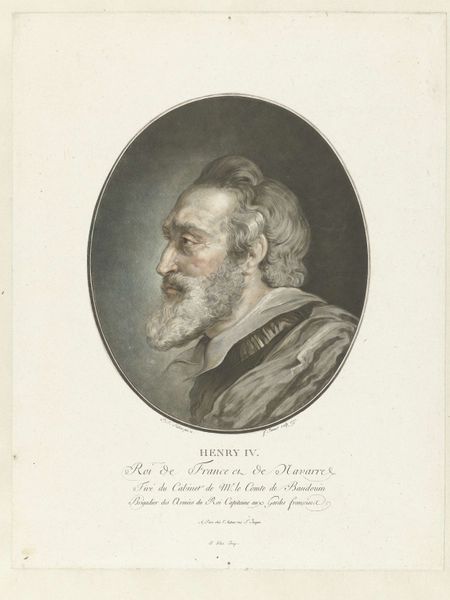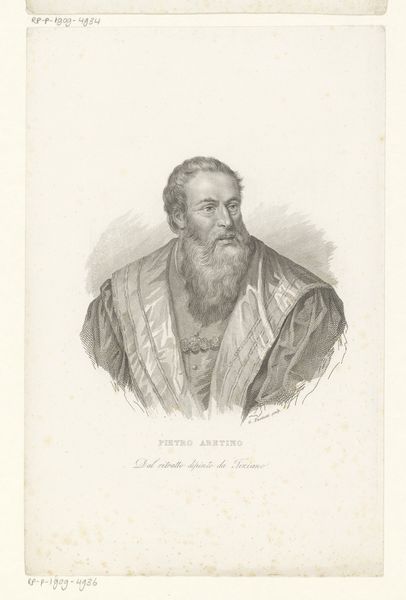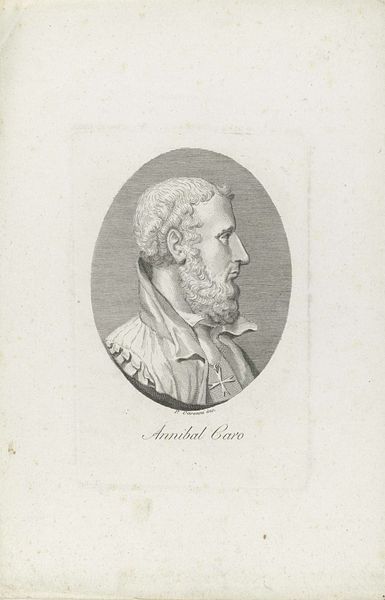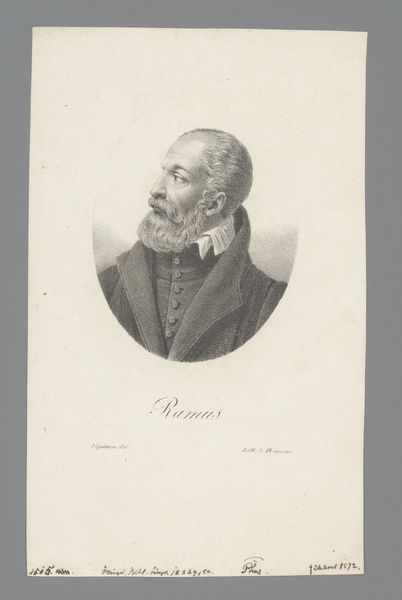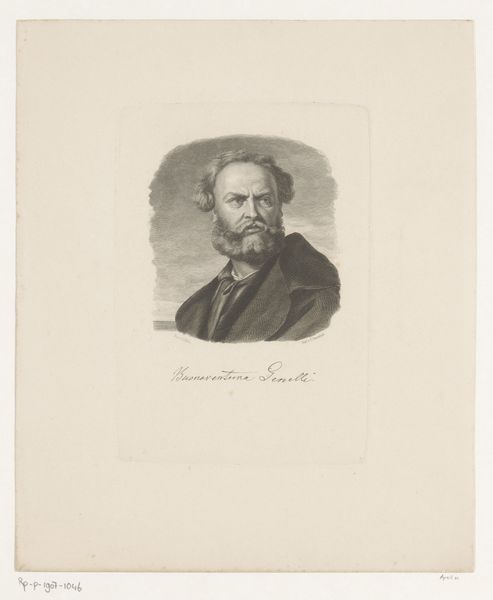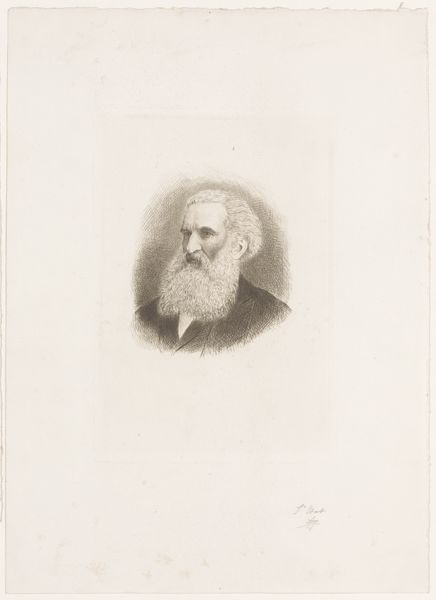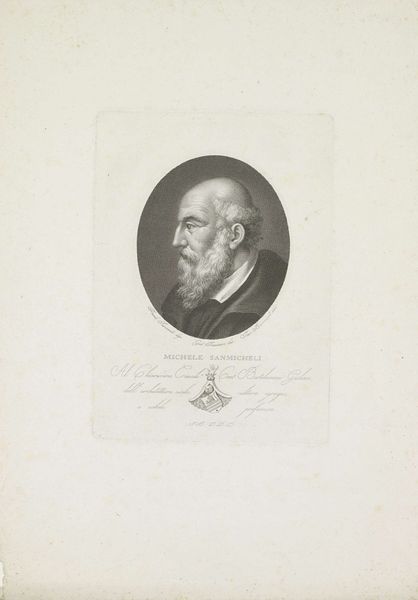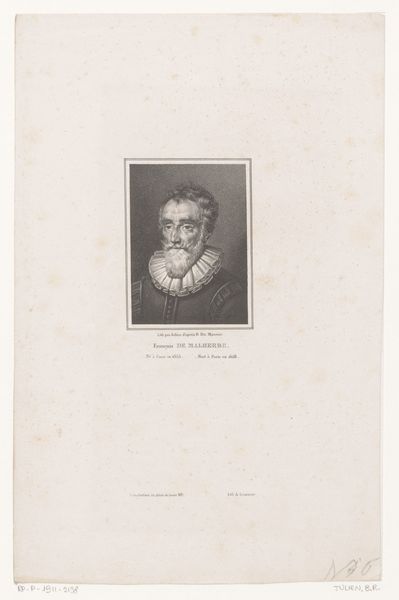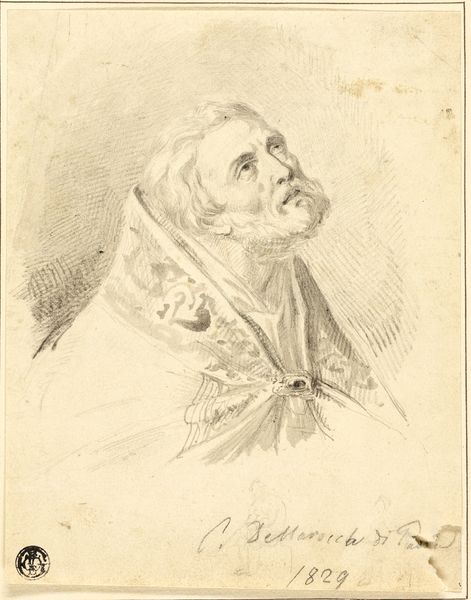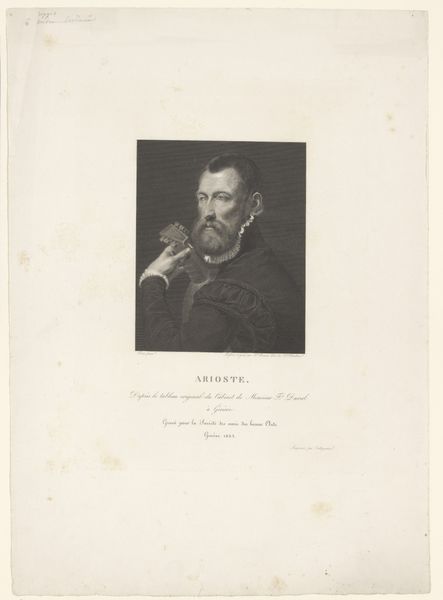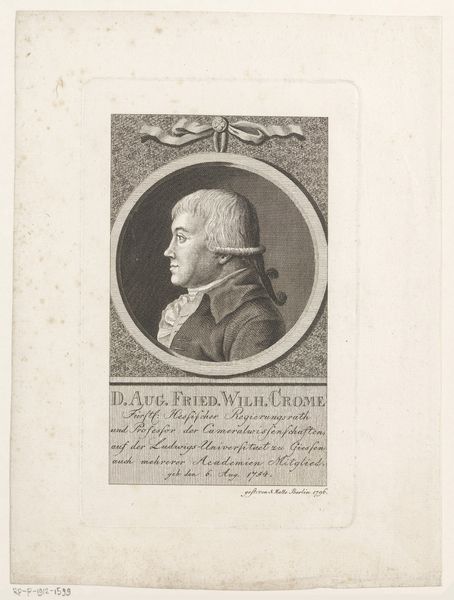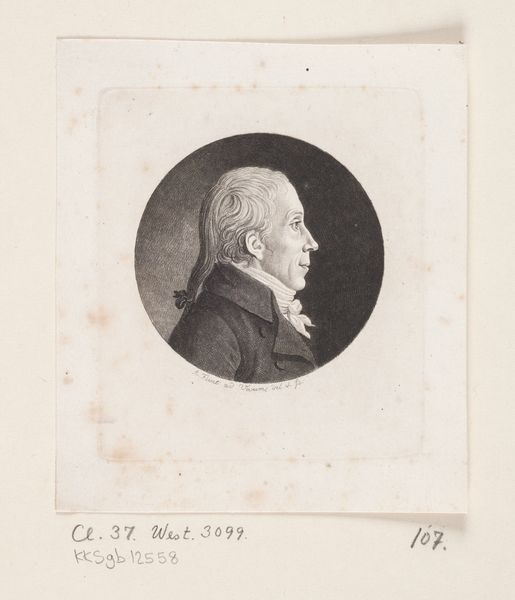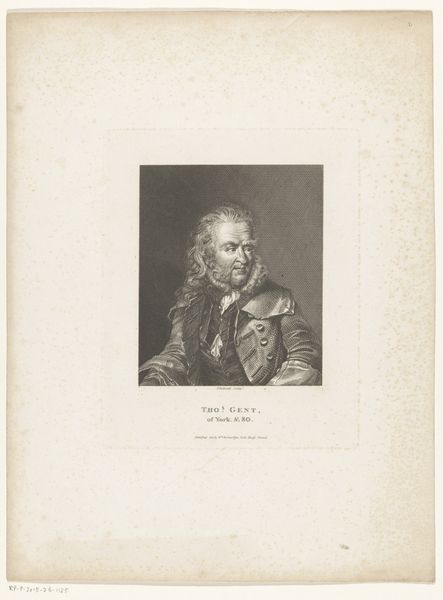
drawing, print, paper, pencil, engraving
#
portrait
#
drawing
# print
#
paper
#
pencil drawing
#
pencil
#
engraving
Dimensions: 246 × 205 mm (image); 412 × 340 mm (sheet)
Copyright: Public Domain
Curator: Let's take a look at this intriguing print, "Henry IV, King of France and Navarre," made using pencil and engraving on paper. What strikes you first? Editor: The sheer melancholy of the piece. The somber colors, the averted gaze… It speaks volumes about the weight of power and perhaps a certain isolation. Curator: Indeed. Note the oval format and the meticulously rendered detail. Janinet, the artist, has masterfully used the contrast between light and shadow to define Henry’s features, paying close attention to the texture of his hair and beard. The composition creates a compelling, almost sculptural presence within a limited field. Editor: It's tempting to read the image within its historical context. Henry IV, a Huguenot who converted to Catholicism to appease his kingdom—his famous quote, “Paris is worth a Mass,” still rings with opportunism. Is Janinet’s work subtly hinting at this internal conflict or public image? The gaze turned away could signify either introspection or evasion. Curator: That’s a valid point. But focus on the artist's technique: see how the incisive lines of the engraving build up a network that defines shape and form. It’s not only about representing a king, but a pure technical achievement in printmaking. The pencil adds subtle gradations, enriching the overall tonality. Editor: I concede that, and agree the craftmanship is stunning. Yet, isn’t a portrait always already political? Representation always reinforces or undermines existing structures of power. Take this averted gaze, it allows the viewer to engage in their own speculations about this once conflicted but undeniably powerful leader, ultimately enhancing the royal mystique. Curator: A persuasive reading! Perhaps both aesthetic appreciation and historical awareness enrich the viewing experience. Editor: Absolutely. Reflecting on artwork is a good way to consider how historical perceptions become embedded into artistic depictions, shaping our comprehension not only about an individual’s image, but also the socio-political landscape that nurtured him.
Comments
No comments
Be the first to comment and join the conversation on the ultimate creative platform.
